Blog

#bioPGH Blog: Lovin’ the Lichen!
 A resource of Biophilia: Pittsburgh, #bioPGH is a weekly blog and social media series that aims to encourage both children and adults to reconnect with nature and enjoy what each of our distinctive seasons has to offer.
A resource of Biophilia: Pittsburgh, #bioPGH is a weekly blog and social media series that aims to encourage both children and adults to reconnect with nature and enjoy what each of our distinctive seasons has to offer.
Coat? Check. Notebook and pen? Check, check. Phone for pictures? Check. We’re all set; let’s look for some lichen!
“Where should we start looking?”
“Well, the beautiful thing about lichens is that they grow on pretty much anything that sits still!”
This past week, I had the opportunity to go on a lichen quest with the current president of the Western Pennsylvania Mushroom Club, Stephen Bucklin (also a Naturalist Educator for the Pittsburgh Parks Conservancy). We were going to start searching around the Center for Sustainable Landscapes, and we found quite a few exciting specimens just in a short amount of time!
First things first, though…what are lichens? A lichen isn’t actually a single organism; it’s a combined symbiotic relationship between a fungus and either algae or cyanobacteria, which creates a “composite organism.” The combined existence works out well as each partner is providing something that the other needs. Normally, cyanobacteria and algae are found in aquatic habitats (both freshwater and marine), but when a part of a lichen, the fungi provides a safe living space. In return, the photosynthetic algae and cyanobacteria provide energy for the fungi. That’s why lichens can thrive on surfaces like rocks and rooftops where it doesn’t seem like any nutritional sources are readily available — their food is being produced in-house.
There is a great deal of diversity across lichens since different combinations of fungi and cyanobacteria can produce different kinds of lichen. There are roughly 13,000-17,000 species of lichens in the world, and they can survive in climates ranging from temperate zones to the tropics to the arctic and Antarctic. Given the range and diversity of lichens around the world, many can be tricky to identify, but mycologists (scientists who study fungi) have a few tricks up their sleeves.
“Lichens are masters of biochemistry,” notes Stephen. “They produce over 1,000 unique chemical compounds, and those compounds occur in different combinations in different kinds of lichen. That means we can look at chemical signatures to help identify different species.”
Stephen also noted that in the presence of even a tiny drop of bleach or potassium hydroxide, the color change (or lack thereof) of some species can help reveal an identity. Some types of lichen also glow under UV light, revealing more helpful clues to ID a species (but remember — chemical and UV tests are tricky and should only be attempted by someone who has been trained to do so).
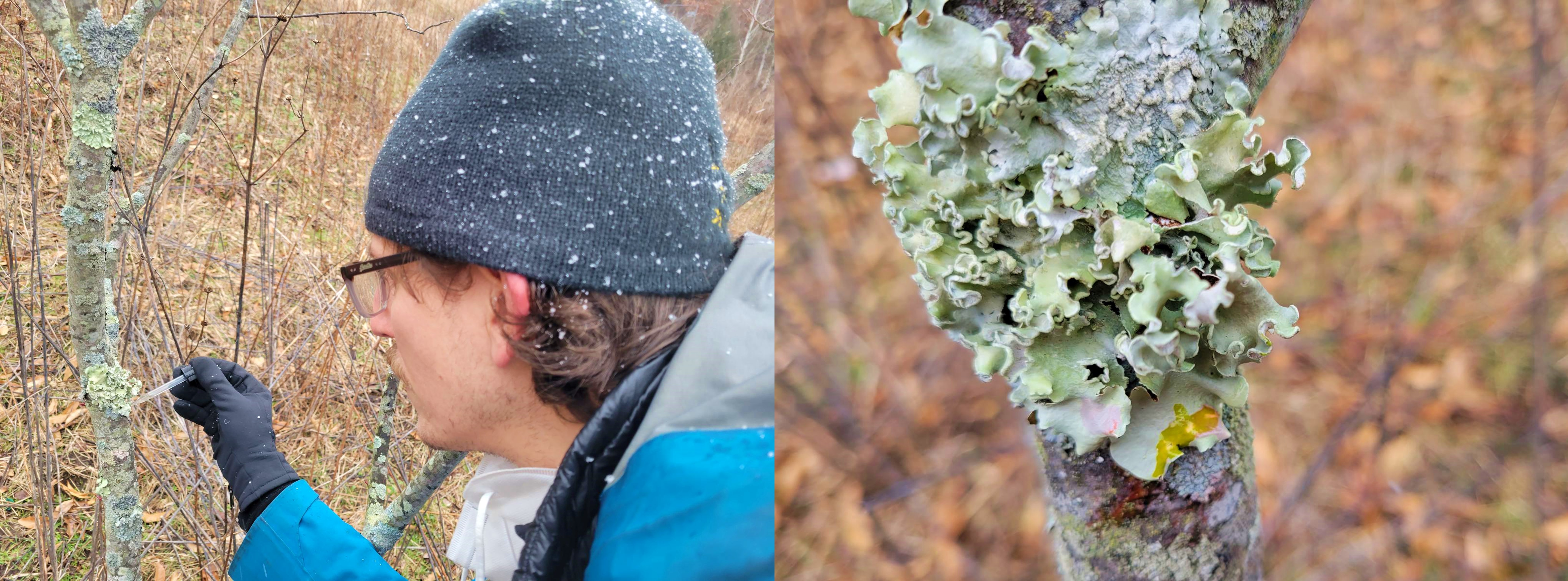 Pretty Ruffle lichen, Parmotrema austrosinense.
Pretty Ruffle lichen, Parmotrema austrosinense.
Broadly speaking, lichens can take on four different shapes, and I’m sure you’ve seen examples of most of them.
Fruticose: These look like little plants themselves! Fruticose lichens can branch away from the surfaces they are growing on, and they can look hairy, leafy, shrubby, or even like little trumpets.
Crustose: Lichens this shape appear “crusty” or bumpy and can grow on rocks and other non-living surfaces like your roof or porch.
Foliose: If “foliose” reminds you of “foliage,” it will be easy to remember that these lichens are leaf-like in appearance.
Squamulose: These lichens are somewhat scaly — not quite crusty like crustose, but not quite as leafy as foliose. You may not always find squamulose noted as a shape in books or other natural history resources since it has been referred to as an intermediate shape.
And now here is the important question – what did we find around the CSL?
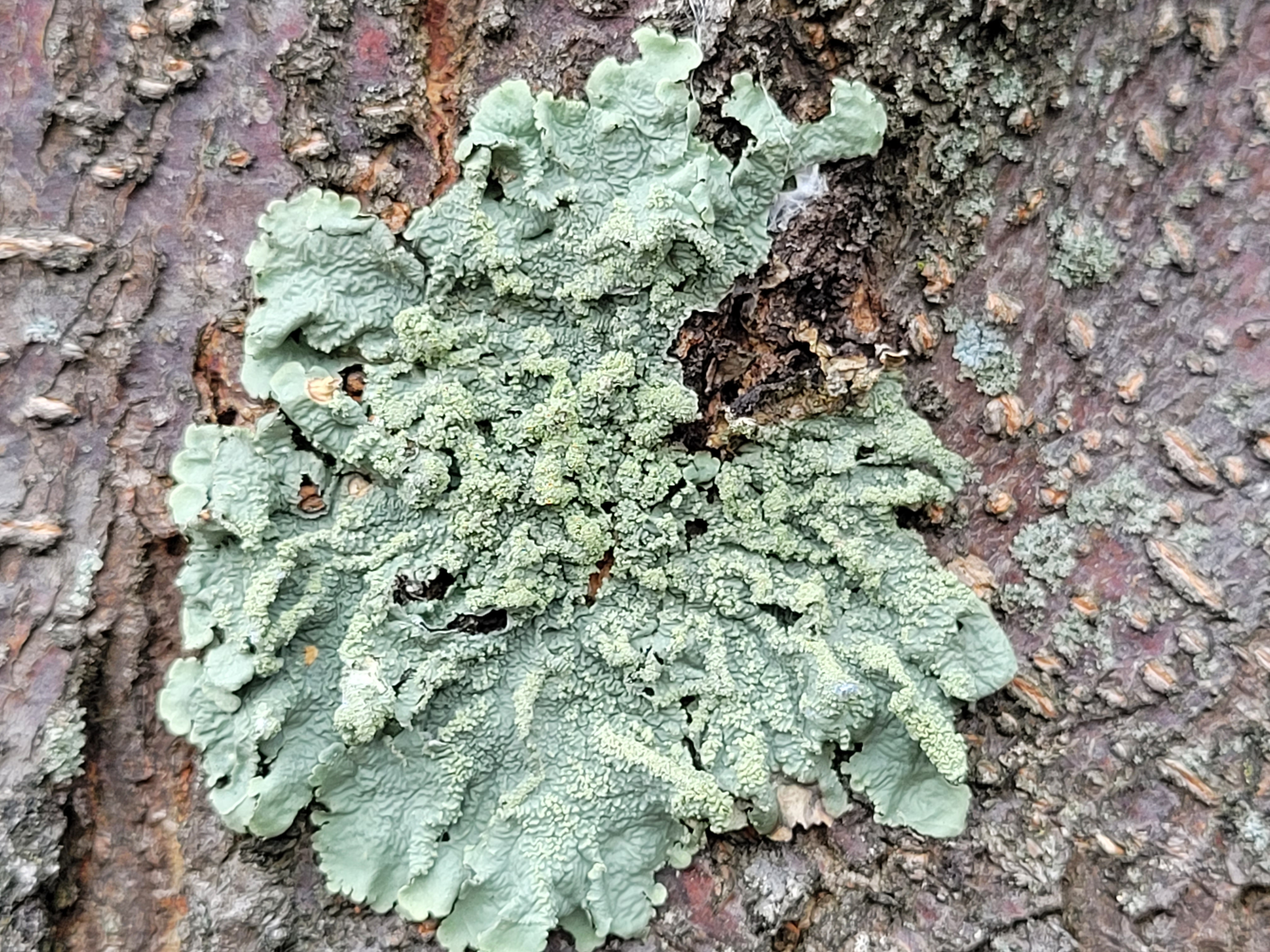
Common greenshield, Flavoparmelia caperata, a foliose lichen
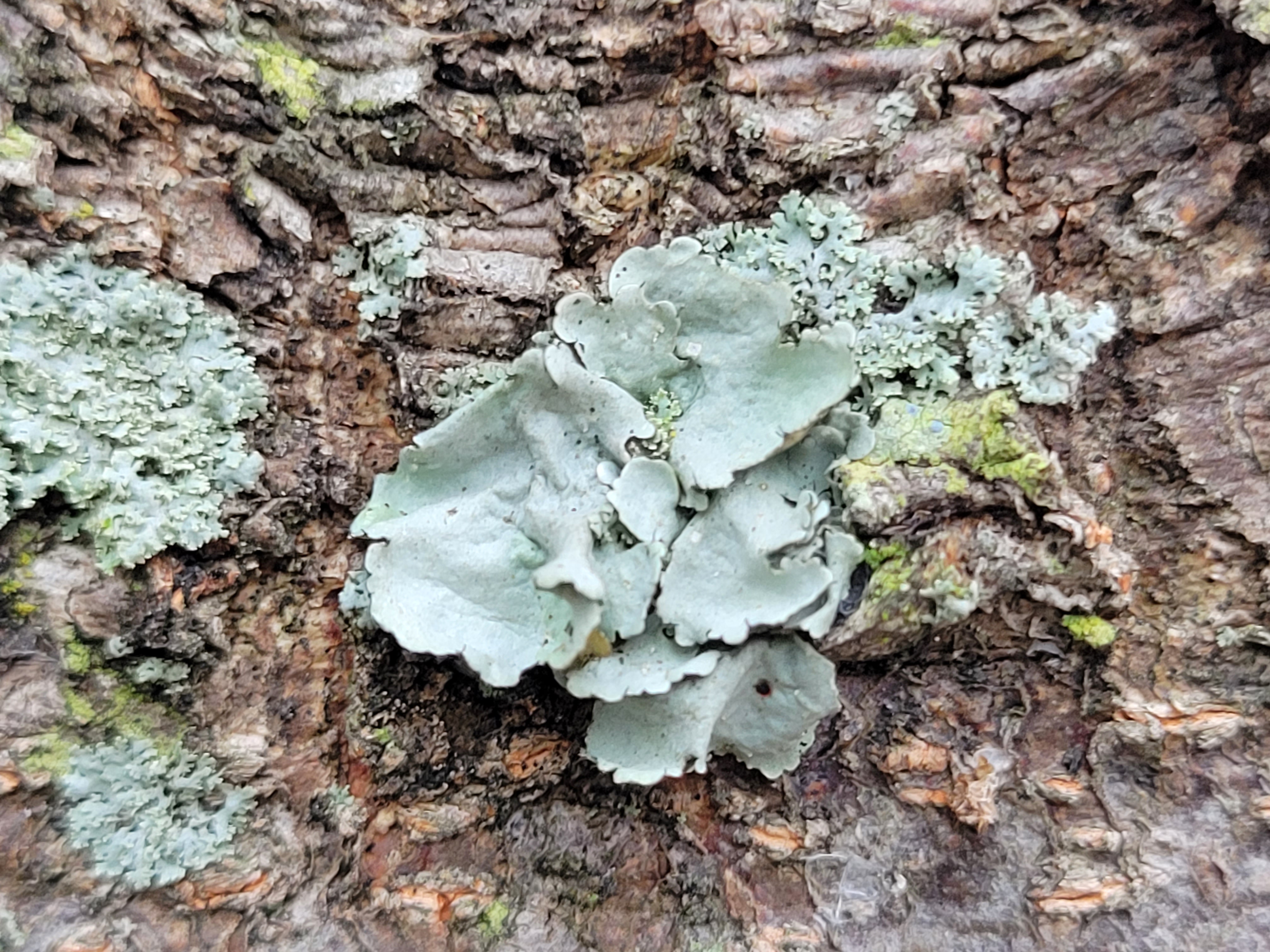
Powder ruffle lichen, Parmotrema hypotropum, a foliose lichen
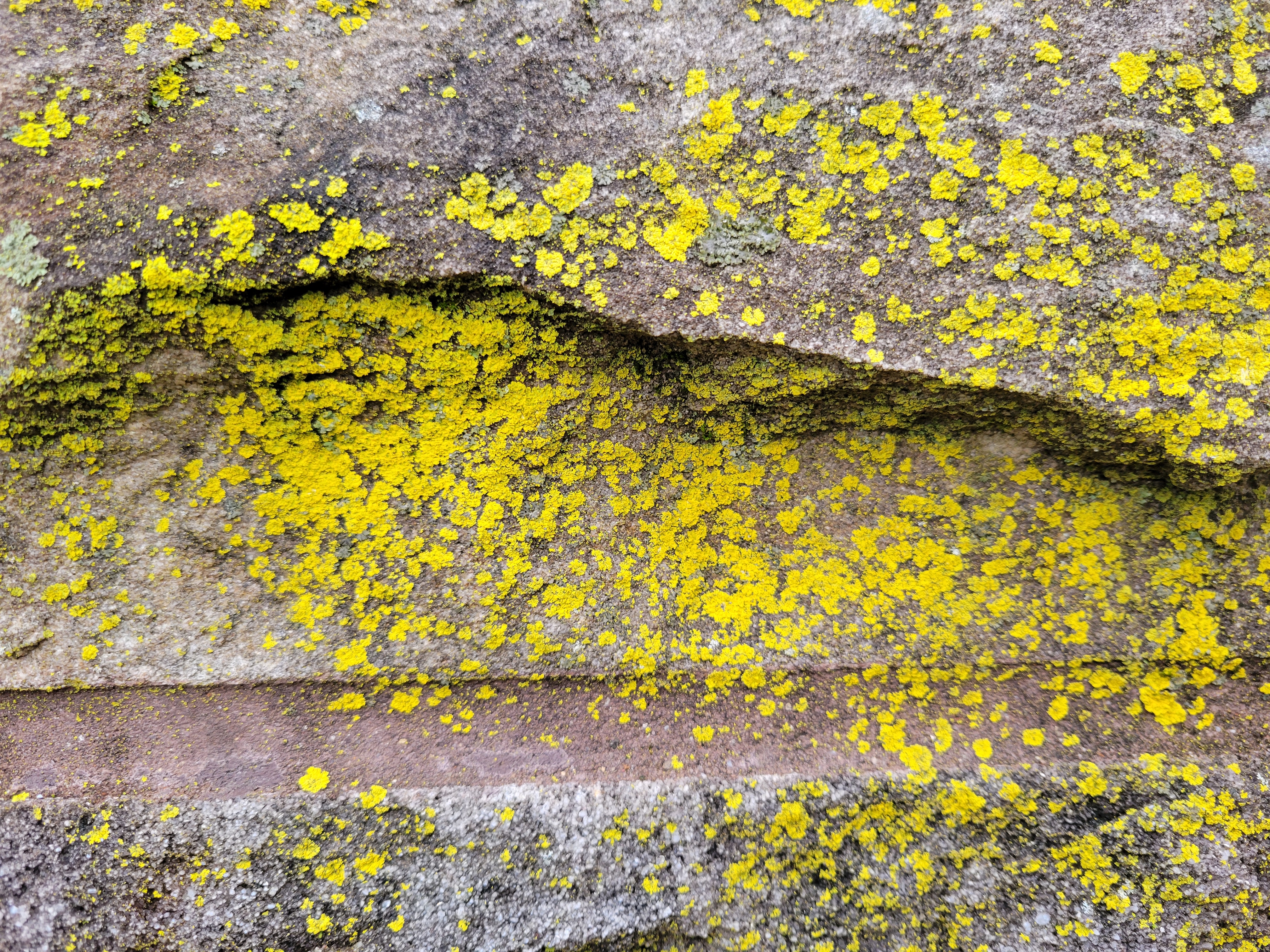
Candleflame lichen, Candelaria concolor, also a foliose lichen – the tiny “foliage,” or rather the tiny lobes, can be seen under magnification.
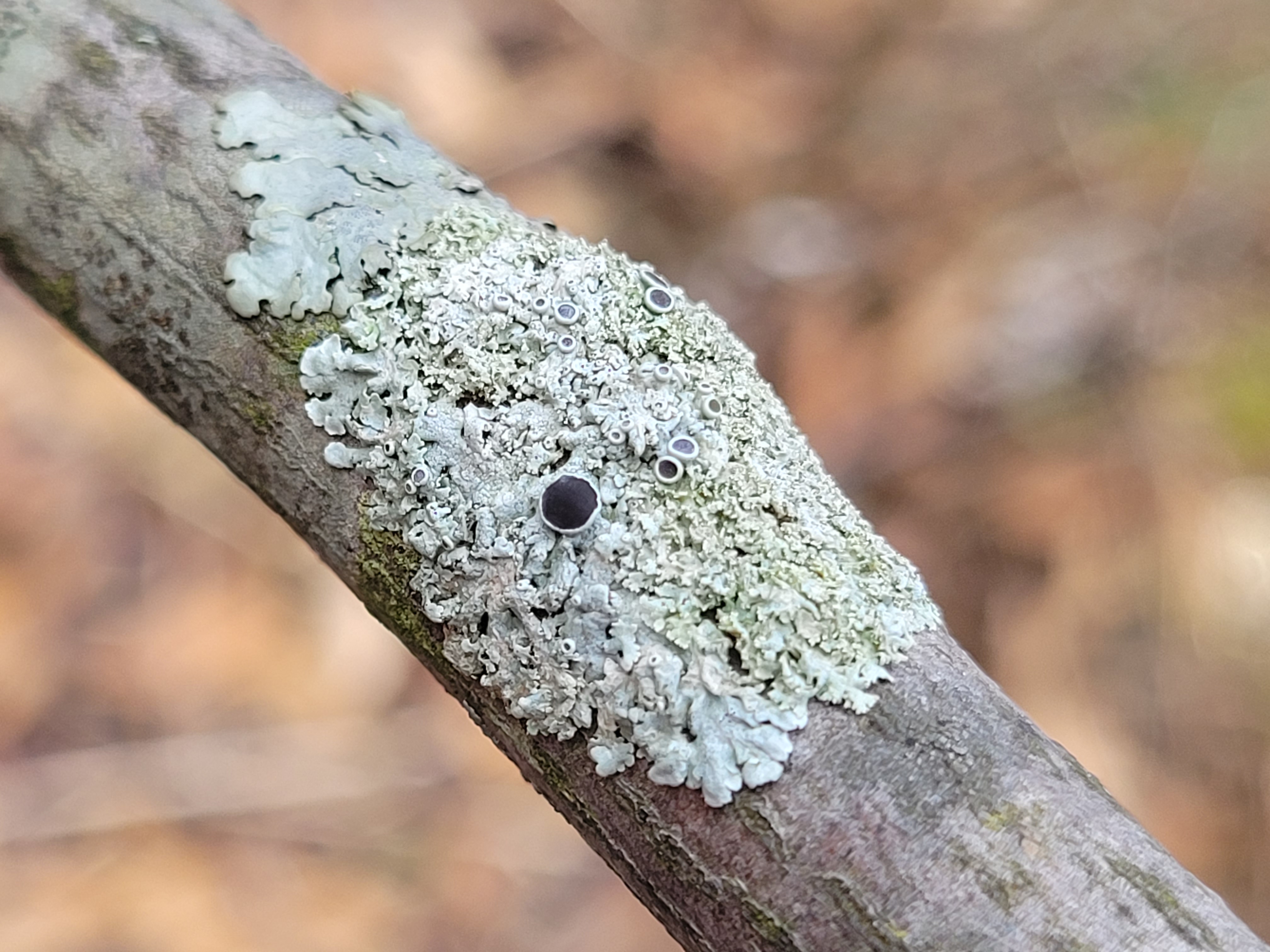
I thought those black dots would be an identifier for a different species, but those are actually reproductive structures called apothecia — little cup-shaped features that produce spores. Not all lichens produce them, but many — like this Physicia specimen — do.
Well now, these were some fun finds! But beyond just being fascinating to look at, lichens play an important role in their ecosystems
“What makes lichens interesting to me,” said Stephen, “is their ecological entanglement; they are an embodiment of the interconnectedness of life. Their existence supports a myriad of other lifeforms from bacteria and tardigrades to insects, birds, and mammals.”
So keep your open for these often-overlooked organisms! Nature always brings more than meets the eye.
Photos: Header, National Park Service. All photos by Maria Wheeler-Dubas

